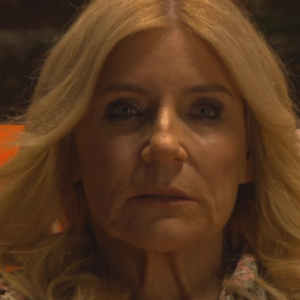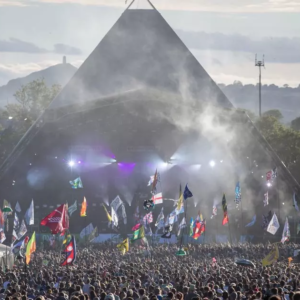Waking the Dead: The concept of bringing the dead back to life has captivated humanity for centuries. From old Egyptian myths to cutting edge Hollywood blockbusters, the thought of “waking the dead” holds a capable grasp on our creative energies. But what about reality? Can science ever really achieve reanimation?
This article plunges into the different aspects of “waking the dead,” investigating the logical possibilities, the persevering nearness in fiction, and the social and devout convictions that fuel our fascination.
Can Science Actually Reanimate the Dead?
While the idea of a Lazarus-like restoration may appear like the domain of science fiction, there are continuous logical endeavors investigating the boundaries of passing. Here’s a breakdown of current areas of research:
Cryonics: This practice includes freezing an individual or body promptly after clinical passing in the trust that future technology can restore them.
Whereas cryonics companies exist, the logical community generally sees it as periphery science due to the monstrous cellular harm caused by freezing.
Suspended Animation: This technique points to initiate a state of near-death in a living being, essentially abating down organic forms. The objective is to potentially protect a body for medical procedures that seem otherwise deadly in an ordinary state.
Whereas effective cases exist in less complex organisms like roundworms, achieving it in people remains distant.
Neural Interfaces and Machine Learning: This futuristic approach investigates the plausibility of uploading a person’s awareness – their memories, thoughts, and identity – to a computer framework.
Whereas critical advancements in brain-computer interfacing have been made, imitating a total human consciousness remains highly theoretical.
The Ethical Concerns: Indeed if logical breakthroughs clear the way for reanimation, significant moral situations would emerge. What lawful rights would the revived individual have? Would their recollections and personalities be really intaglio?
The social and philosophical suggestions of “waking the dead” are complex and require careful consideration.
Waking the Dead in Fiction: A Longstanding Trope
From literature to film, the concept of reanimation has been a popular trope for centuries. Here’s a glimpse into how fiction depicts “waking the dead”:
Mythology and Folklore: Over societies, stories proliferate of restoration or near-death encounters. From the Egyptian god Osiris to the Hindu god Yama, myths explore the afterlife and the possibility of returning from it.
Gothic Writing and Horror: Reanimation frequently takes a dull turn in Gothic fiction. Mary Shelley’s “Frankenstein” is a prime illustration, where a scientist’s creation becomes a huge image of resisting the natural order.
Similarly, zombie accounts delineate reanimation as an alarming prospect, obscuring the lines between life and death.
Science Fiction: Science fiction offers a more optimistic perspective on reanimation. Appears like “Star Trek” depict therapeutic innovation that can recuperate near-fatal wounds and indeed switch passing in some cases.
These depictions regularly highlight the potential benefits of progressing restorative science.
The portrayal of “waking the dead” in fiction reflects our tensions and trusts around passing, innovation, and the nature of awareness. It permits us to explore these subjects in a secure, controlled environment.
The Cultural and Religious Centrality of Reanimation
The concept of reanimation holds deep significance in different societies and religions. Let’s explore some key beliefs:
Reincarnation: The belief in rebirth after death is central to religions like Hinduism, Buddhism, and Sikhism. Here, “waking the dead” is not an exacting act but a ceaseless cycle of the soul passing into a modern body.
Near-Death Encounters: Numerous individuals report encountering a sense of leaving their body and seeing a shining light amid near-death encounters (NDEs). These accounts, whereas subjective, contribute to the social interest with the possibility of life after death.
The Importance of Proper Burial: In a few cultures, expound burial customs guarantee a tranquil move to the afterlife. Homes like embalming in antiquated Egypt pointed to protect the body for a potential return of the soul.
These social and devout beliefs highlight the human crave for progression past physical passing. The thought of “waking the dead” offers a shape of reassurance, a trust that life, or some form of it, may proceed after our bodies terminate to function.
A Complex Fascination
The concept of “waking the dead” proceeds to interest us since it touches upon crucial questions about life, passing, and the nature of consciousness.
Whereas science is making strides in ranges like near-death encounters and suspended activity, genuine reanimation in the way fiction depicts it remains a long way off.
The enduring interest with “waking the dead” transcends the boundaries of science and religion. It talks to our want to deceive passing, to hold onto adored ones, and to explore the unknown.
FAQs
Q: Can science actually bring someone back from the dead?
A: As of today (May 13, 2024), genuine reanimation, like in fiction, isn’t conceivable. Logical endeavors like cryonics and suspended activity are exploring the boundaries of passing, but they have limitations.
Cryonics faces challenges in protecting bodies without harm. Suspended movement, whereas effective in simpler organisms, is distant from human application.
Q: What about uploading consciousness to a computer?
A: This futuristic approach is highly theoretical. Brain-computer interfacing is progressing, but imitating a total human awareness with recollections and personality might not be achievable in the foreseeable future.
Q: Are there any ethical concerns with reanimation?
A: Absolutely. Indeed if science achieves it, major moral predicaments would emerge. What legitimate rights would the restored person have? Would their recollections and identities be intaglio? The social and philosophical suggestions of “waking the dead” require cautious consideration.
Q: Why are stories about waking the dead so popular?
A: These stories tap into our anxieties and trusts about passing, innovation, and consciousness. They permit us to explore these subjects in a secure, controlled environment.
Q: How is waking the dead portrayed in different genres?
A: * Mythology and Fables: Often include gods or heroes returning from the underworld (Osiris in Egypt, Yama in Hinduism).
Gothic Literature and Horror: Reanimation takes a dark turn, with monstrous creations like Frankenstein or unnerving zombies.
The comic series takes a more hopeful approach. The Commonwealth, a large network of communities, emerges as a dominant force. Rick Grimes, the series’ main protagonist, disappears under mysterious circumstances, leaving a positive legacy. Carl Grimes, his son, takes a central role in rebuilding society and fostering peace between communities. The series concludes with a time jump showing a thriving future where humanity has adapted to the walker threat and begun rebuilding civilization.
To read more, click here





